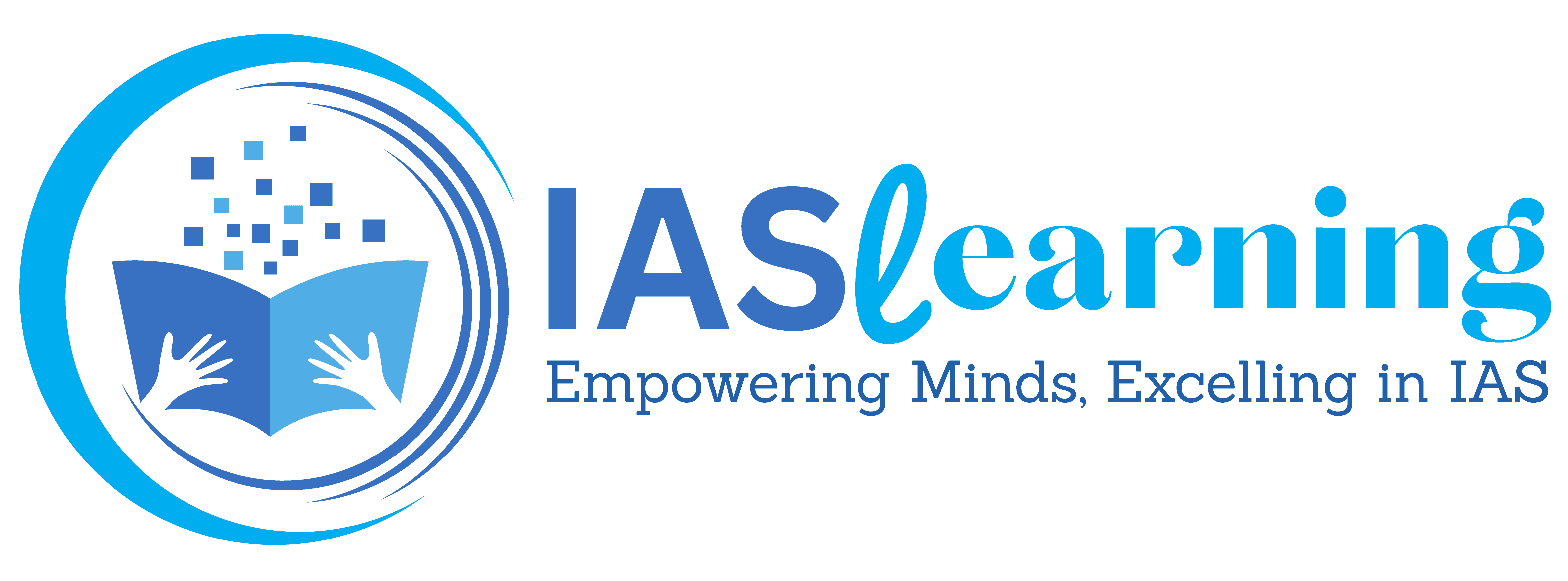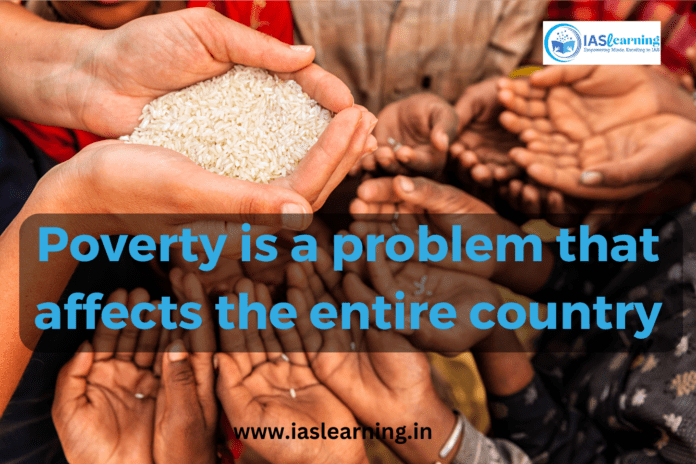Table of Contents
What is the main causes of poverty in India?
India, the world’s second-most populous country, is known for its rich cultural heritage, diverse landscapes, and economic growth. However, it also grapples with the persistent issue of poverty. Despite significant progress in various sectors, a substantial portion of India’s population continues to live in poverty. This essay aims to explore the main causes of poverty in India and shed light on government initiatives aimed at poverty alleviation.
Poverty in India: A Historical Background
Before the 1990s, India operated as a closed economy, and the government aimed to provide resources to all of its residents through the public distribution system. However, due to fiscal constraints and policy changes brought about by India’s entry into the global economy, the government had to shift its approach and focus on delivering resources to those considered most in need—those who were deemed deserving of government assistance.
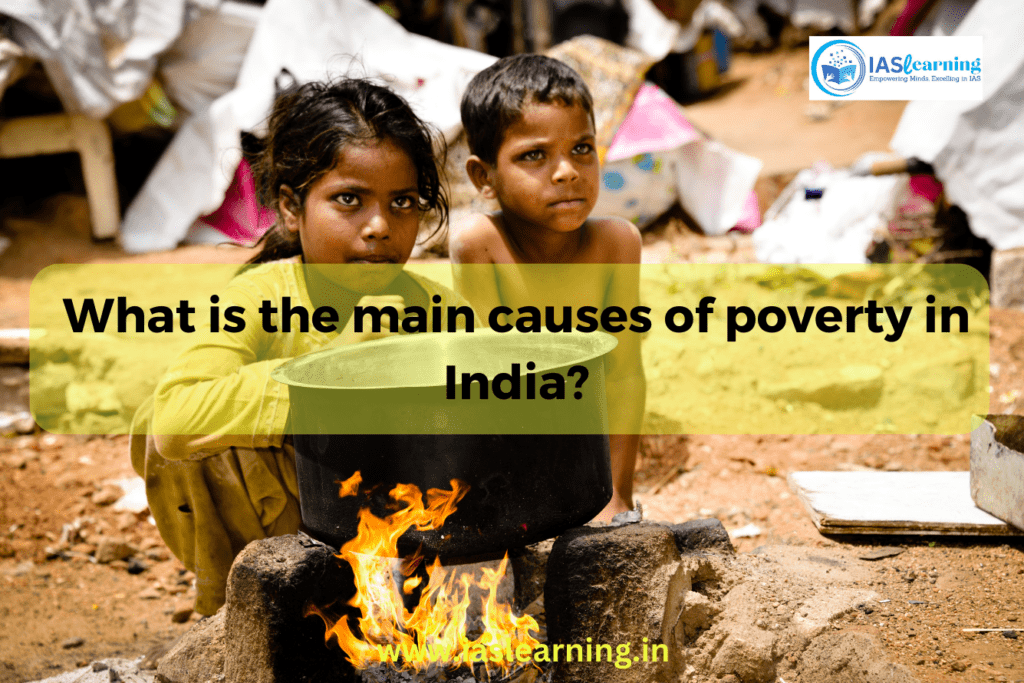
This transition led to the adoption of the Targeted Public Distribution System. In essence, this system meant that individuals falling below the poverty line would receive subsidized food from the government. However, poverty is a complex and multi-dimensional issue, making it challenging to define precisely. It varies across regions, between urban and rural areas, and based on different criteria. Consequently, diverse perspectives are used to define and measure poverty in India.
Nonetheless, the overarching concept remains that an individual is considered to be living in poverty when they lack adequate access to and affordability for fundamental necessities such as food, clothing, shelter, healthcare, and education. International organizations like the United Nations (UN) and the World Bank employ different methodologies to calculate poverty, using metrics such as Purchasing Power Parity (PPP) and nominal relative basis. As a result, the diversity of viewpoints leads to varying poverty estimations.
It is crucial to understand the historical context and changing economic policies when examining poverty in India. The shift from a closed economy to a more open one had significant implications for how resources were distributed and how poverty was addressed. The adoption of targeted approaches, while intended to allocate resources more efficiently to the most vulnerable, also raised questions about the accuracy of poverty assessments and whether some deserving individuals might be left out of the safety net.
Types of Poverty

There are two main classifications of poverty:
- Absolute Poverty: Absolute poverty refers to a condition in which a household’s income falls below a necessary level to maintain basic living standards. These basic standards typically include access to essential needs such as food, shelter, and housing. Absolute poverty is a measure that allows for comparisons between different countries and over time. It is often used to assess the living conditions of the world’s poorest populations.
- In 1990, the concept of “absolute poverty” was introduced with the establishment of the “dollar a day” poverty line. This measure determined absolute poverty based on the standards of the world’s poorest countries.
- In October 2015, the World Bank updated the absolute poverty line to $1.90 a day, reflecting changes in the cost of living and global economic conditions.
- Relative Poverty: Relative poverty is defined from a social perspective, taking into account an individual’s living standards in comparison to the economic standards of the population living in their immediate surroundings. It is a measure of income inequality and focuses on how one’s income or living conditions compare to those of others in the same society.
- Relative poverty is often measured as the percentage of the population with income levels falling below a specific proportion of the median income in the society.
Poverty Estimation in India

Poverty estimation in India is carried out by NITI Aayog’s task force, using data collected by the National Sample Survey Office under the Ministry of Statistics and Programme Implementation (MOSPI). It is important to note that poverty in India is primarily measured based on consumption expenditure rather than income levels. Here is how poverty estimation works in India:
- Poverty is assessed based on consumer expenditure surveys conducted by the National Sample Survey Organisation.
- A household is classified as poor if its expenditure level falls below a specific poverty line, which is determined based on consumption patterns and living standards.
- The incidence of poverty is typically measured using the poverty ratio, expressed as a percentage. The poverty ratio is the ratio of the number of people classified as poor to the total population.
- Various committees have been formed in India to determine the poverty line and update it over time. These committees consider factors like calorie requirements and living expenses to set the poverty threshold.
- The Alagh Committee in 1979 established a poverty line based on a minimum daily calorie requirement of 2400 for adults in rural areas and 2100 for adults in urban areas.
- Subsequently, other committees, such as the Lakdawala Committee (1993), Tendulkar Committee (2009), and Rangarajan Committee (2012), have been tasked with poverty estimation and line setting.
- According to the Rangarajan Committee report in 2014, the poverty line in India was estimated as a Monthly Per Capita Expenditure of Rs. 1407 in urban areas and Rs. 972 in rural areas. This estimate takes into account the cost of basic necessities required for a minimum standard of living.
Causes of Poverty in India
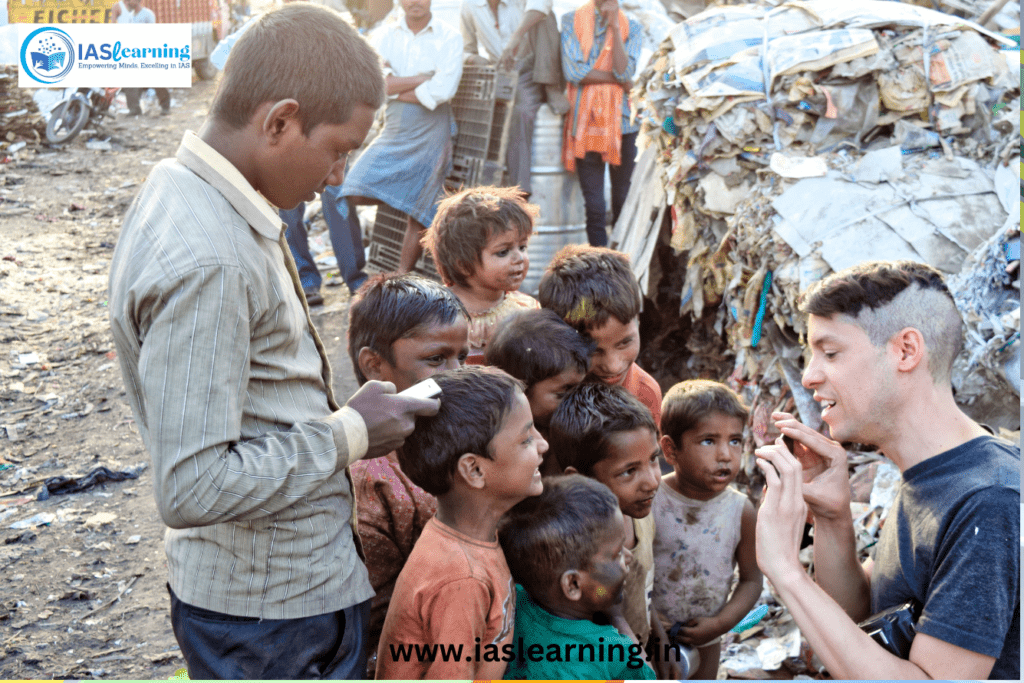
- Population Growth: One of the primary causes of poverty in India is its rapid population growth. With over 1.3 billion people, the country faces immense pressure to provide basic services, education, healthcare, and employment opportunities for its citizens. The high birth rate, coupled with limited access to family planning resources in some regions, exacerbates the problem.
- Unemployment and Underemployment: India faces a persistent issue of unemployment and underemployment, particularly among its youth. The education system often does not align with the demands of the job market, leading to a skills gap. Many individuals end up in low-paying, informal sector jobs, which offer minimal job security and income.
- Agricultural Dependence: A significant portion of India’s population relies on agriculture for their livelihoods. However, the agricultural sector faces challenges such as land fragmentation, outdated farming techniques, and weather-related risks. These factors contribute to low agricultural productivity and income instability among farmers.
- Income Inequality: Income inequality is a glaring issue in India, with a substantial gap between the rich and poor. A small portion of the population enjoys immense wealth while the majority struggles to make ends meet. This inequality is exacerbated by factors such as caste-based discrimination and lack of access to resources and opportunities.
- Lack of Access to Education: Despite efforts to improve education in India, a significant portion of the population still lacks access to quality education. This perpetuates the cycle of poverty as individuals with limited education face restricted job opportunities and income potential.
- Healthcare Disparities: Healthcare disparities are another major contributor to poverty in India. A significant portion of the population does not have access to affordable and quality healthcare services, leading to health-related expenses that can push families into poverty.
- Rural-Urban Migration: Rural-urban migration is a common phenomenon in India as individuals seek better economic prospects in cities. However, this often results in overcrowded urban areas with inadequate infrastructure and services, leading to the creation of urban slums and worsening poverty conditions.
- Corruption: Corruption at various levels of government and bureaucracy can divert resources away from poverty alleviation programs and hinder economic development. It can also discourage foreign investment and economic growth.
Government Initiatives to Alleviate Poverty in India
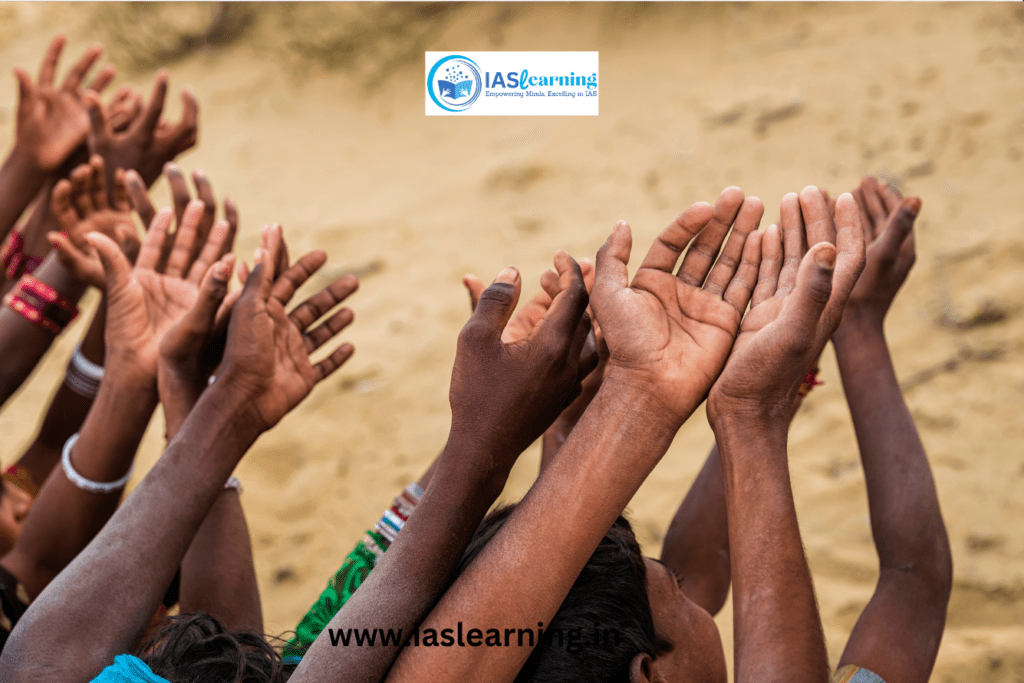
The Government of India has implemented various initiatives over the years to address the causes of poverty and uplift the living standards of its citizens. Some of the notable initiatives include:
- Mahatma Gandhi National Rural Employment Guarantee Act (MGNREGA): Launched in 2005, MGNREGA guarantees 100 days of employment to every household in rural India. It aims to create sustainable livelihoods for rural populations by providing them with jobs in public works projects.
- Pradhan Mantri Jan Dhan Yojana (PMJDY): This financial inclusion program, launched in 2014, aims to provide access to financial services, such as banking and insurance, to all households. It helps in promoting savings and reducing financial vulnerability.
- Pradhan Mantri Awas Yojana (PMAY): PMAY, launched in 2015, seeks to provide affordable housing to all urban and rural poor households by 2022. It aims to improve the living conditions of the economically weaker sections of society.
- Skill India Mission: Launched in 2015, Skill India aims to provide skill training to youth across various sectors, making them more employable and reducing unemployment and underemployment.
- National Rural Livelihoods Mission (NRLM): NRLM, launched in 2011, focuses on promoting self-employment and entrepreneurship among rural households, particularly women. It aims to reduce rural poverty by enhancing income-generating opportunities.
- Swachh Bharat Abhiyan (Clean India Campaign): Launched in 2014, this campaign aims to improve sanitation and hygiene in rural and urban areas. Access to clean and safe sanitation facilities is essential for overall well-being and poverty reduction.
- Ayushman Bharat – Pradhan Mantri Jan Arogya Yojana (PMJAY): Launched in 2018, PMJAY provides financial protection to poor and vulnerable families by offering health insurance coverage for hospitalization and medical expenses.
- Digital India: The Digital India initiative focuses on promoting digital literacy and expanding digital infrastructure, which can enhance access to education, healthcare, and government services, especially in rural areas.
- Jan Dhan, Aadhar, and Mobile (JAM) Trinity: The JAM Trinity aims to improve the targeted delivery of subsidies and benefits by linking bank accounts (Jan Dhan), biometric identification (Aadhar), and mobile numbers. This reduces leakages and ensures that benefits reach the intended beneficiaries.
- National Food Security Act (NFSA): Implemented in 2013, NFSA aims to provide food security to vulnerable sections of society by providing subsidized food grains through the Public Distribution System (PDS).
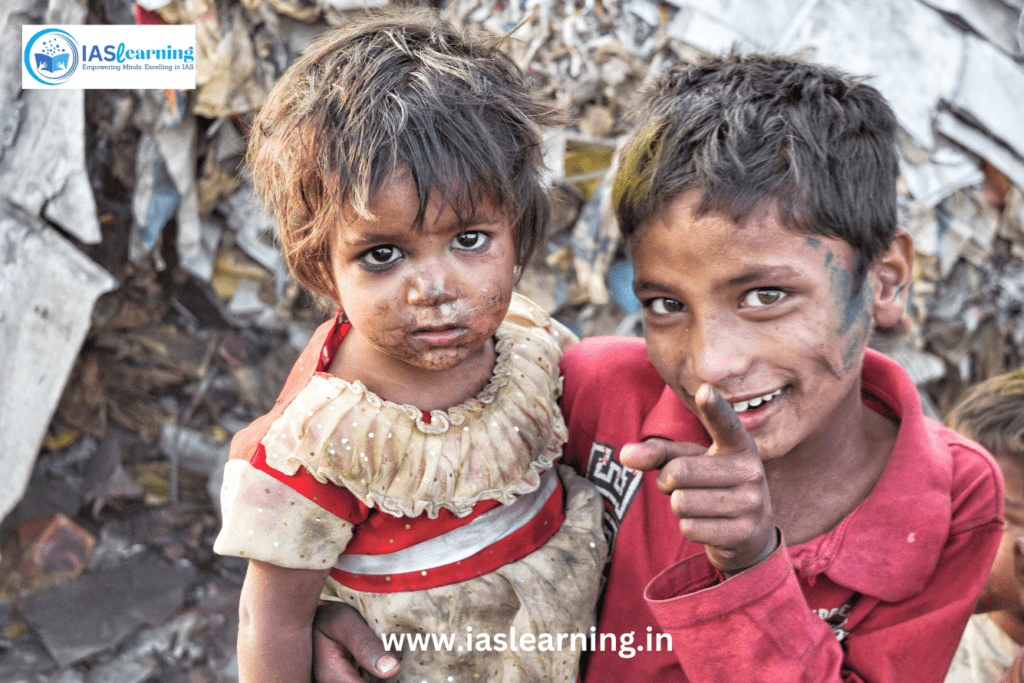
Conclusion
While India has made significant strides in reducing poverty over the years, it still faces complex challenges due to its vast and diverse population. Poverty in India is a multifaceted issue with various causes, including population growth, unemployment, income inequality, and limited access to education and healthcare. The government’s initiatives play a crucial role in addressing these challenges and improving the standard of living for millions of people.
However, it is essential to recognize that poverty alleviation is an ongoing process that requires sustained efforts and collaboration between the government, civil society, and the private sector. Continued investment in education, healthcare, job creation, and social safety nets, along with a focus on reducing income inequality, will be key to further reducing poverty in India and ensuring a brighter future for its citizens.
